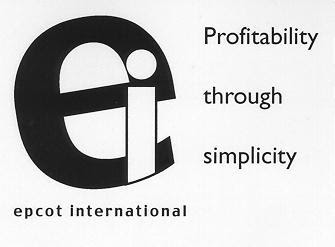Corona virus COVID-19 has given us all time to think and conjure up things that can upset the established apple cart or improve it. We need and that includes FDA to simplify FDA’s approval processes and method if we want the drug industry to come back to the United States and be able to supply needed essential medicines. We have an opportunity. There is no financial affiliation with any for profit and nonprofit entity.
The current global epidemic is not the last one. We could have many. We need to be self-sufficient to access the needed drugs. Why I say this? In the current and any future epidemic countries will fend for their needs. Case in point is chloroquine. Many have speculated that chloroquine can help in treatment of COVID-19. It is in short supply in US. US FDA asked (1) Ipca Lab, India, to supply the drug for the US market when in 2017 Ipca Labs(2) was banned to exports to US. Interestingly Indian Government banned chloroquine exports (3).
If we want pharma manufacturing to come back to US, the FDA current review and approval methods and processes (4, 5) need to streamlined and simplified. I am sure US has a list of essential drugs. Stockpiles might not help if we cannot manufacture the active ingredients and formulate them in US.
Should the US population revolt to bring pharma manufacturing home? Besides lip talk our legislator and the regulators would not do anything. In addition to bringing pharma manufacturing home, they have to compete against the best manufacturing technologies outside to produce quality drugs at the lowest cost. Many stars will have to align.
In my recent post (5) I have tried to describe the current approval and application process. I am not a master of the application process, but if the pieces and parts of what I understand are true, we have an opportunity to improve. This will give the industry an incentive to come to US. I call my perspective “nondestructive creation” or an outlier thinking. Some or many could consider all this a farfetched dream and can’t be done. Well most thought man could not go the moon and come back. Well, we did that and some.
US FDA, like any manufacturing organization, where continuous improvement is routine, has to improve and simplify its NDA/ANDA review and approval processes. FDA has to shed its lenient methods (483 citations which I call “medal of honor” and take a tougher stand (6,7). Best of the best in pharma have to compete for the largest market. It’s not just the new drugs. FDA has to hold their feet to the fire. In addition, we need to be able to manufacture lifesaving drugs in case we need them for the next pandemic. We are not ready today as we can’t get chloroquine as explained earlier.
Every manufacturer practices QbD from the get go for every product. Industry practices “continuous improvement” in everything they it does. If they did not their products would have a very short shelf life. FDA has been preaching “quality by design (QbD)(8)”. Has it been practicing them for its NDA/ANDA review and approval processes? In addition, what has FDA done with respect to incorporate “continuous improvement” in its review and approval processes. My conjecture is and many others would concur that FDA’s current NDA/ANDA processes are quality by analysis/aggravation processes and could use improvements.
May be their understanding of QbD is different from what they have been preaching. If regulators believe their current ANDA/NDA application/review/approval process pathway is QbD based then we need to reexamine QbD definition. My conjecture is FDA would not be pleased to see their QbD rating if there was such a scale. As discussed earlier (5) no one really knows how much time it takes to get approvals. With that said, I wonder how many companies would want to establish manufacturing plants in the United States.
We need to be proactive and not reactive in bringing manufacturing home. In that effort we can also improve regulatory practices. If we don’t do it, another epidemic might not be kind to the US population.
Girish Malhotra, PE
President
EPCOT International
1. FDA frees India’s Ipca Lab from import ban so it can ship unproven Chloroquine for COVID-19 treatments, FiercePharma, March 23, 2020
4. Malhotra, Girish: Strategies to Increase Generic Drug Competition and Bring Manufacturing to The United States of America, Profitability through Simplicity, March 16, 2020
5. Malhotra, Girish: GDFUA II ANDA (Abbreviated New Drug Application) Review Target of 8-10 Months should be a Cause of Concern, Profitability through Simplicity, March 24, 2020
6. Malhotra, Girish: Are US FDA 483 Citations a "Medal of Honor" or “Rite of Passage” to Disgrace for the Pharma companies? Profitability through Simplicity, October 16, 2019
7. Malhotra, Girish: ONE PAGE Road Map to Reduce Drug Shortages, Assure Quality and Improve Affordability, Profitability through Simplicity, December 6, 2019

